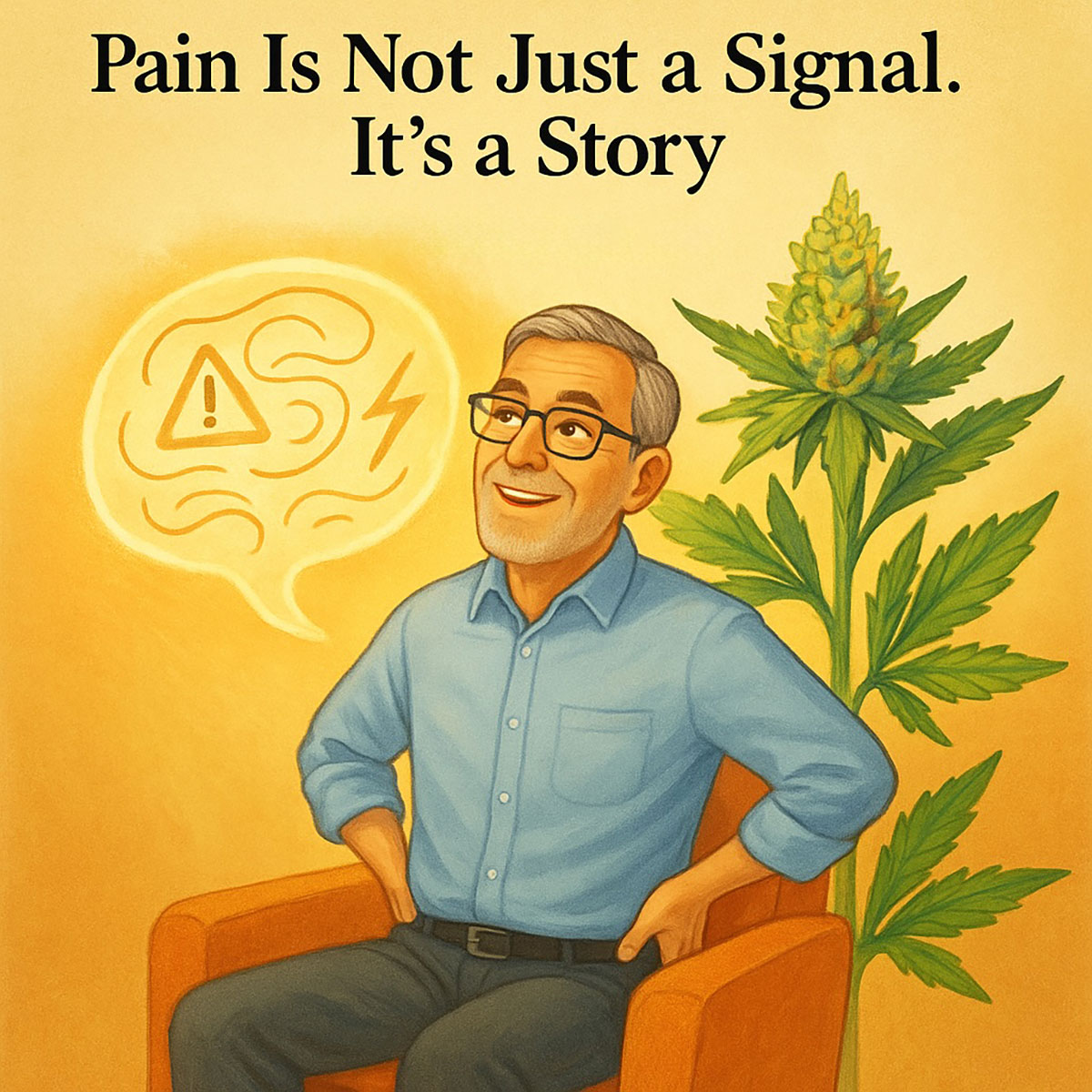Author: Dr. Kim, Medical Doctor at Aurea Care (Pen name)
Sitting was a timed event for him, though he didn’t need a clock to know when time was up. About ten minutes in, his lower back would start staging a revolt. So he kept a foam cushion in the car and treated every chair like it might be booby-trapped… or at least rigged to explode into lower back misery. That’s when the pain would start offering helpful suggestions: Let’s stand. Let’s move. Let’s pretend to take a phone call and bail (he actually told me this).
He’s fifty-eight, an accountant with smart hair and smart glasses. I’ve never seen his desk, but I’d bet it’s organized down to the paperclip. The trouble started after surgery for a worn-out lumbar disc went wrong—two vertebrae fused, leaving the rest of his spine furious about it.
Golf clubs gathered dust in the garage. Road trips shrank to the radius of what his spine would tolerate—which, on a good day, was about the distance to the grocery store. Dinner with friends meant scanning for the least terrible chair and the fastest escape route.
Somewhere along the way, the pain stopped behaving like a straightforward warning and started running a full commentary—telling and retelling the story of his pain. Not just what hurt, but the meaning of it: adding drama to every scene—predicting catastrophe if he sat too long, foreshadowing disaster if he bent the wrong way, even inventing new plot twists and wildly exaggerating the danger. By then, it wasn’t just pain anymore—it was a whole narrative he hadn’t agreed to star in.
Pain starts as a signal—your body’s Hey, something’s wrong alert. But if it sticks around long enough, your brain starts piling on context, backstory, even a soundtrack. And not a good one—more ominous violins than chill lo-fi beats. At that point, it’s less about the injury and more about the ongoing commentary your nervous system has been workshopping for years.
Pain sounds simple in textbooks: damage, signal, ouch—usually starting with nociceptors, specialized nerve endings built to detect danger. Step on a nail, twist your ankle, touch a hot pan—they fire off a signal, send it up the spinal cord, and into the brain where it’s processed as pain. Cause, effect. Simple enough… in theory.
Except that’s not how most real-life pain works.
In acute pain, the alarm matches the fire. You cut your finger, the nerves scream, you protect the injury, and as healing begins, the signal fades. End of story.
In chronic pain, the story takes a turn the body never meant to write. The wound heals, but the alarm keeps ringing. The brain starts editing the signal, underlining the threats, adding a soundtrack of unease. Areas like the amygdala and anterior cingulate—normally your security team—now work against you, treating every twinge like an incoming threat. Over time, pain becomes less about what’s happening in your back, knee, or shoulder—and more about how the whole system has learned to expect it, rehearse it, and deliver it on cue.
There are a few flavors of pain worth knowing about:
- Nociceptive pain—from tissue injury, like a sprained ankle, a broken bone, or appendicitis.
- Neuropathic pain—from injury or disease affecting the nerves themselves, as in a herniated disc pressing on the sciatic nerve, diabetic neuropathy, or shingles.
- Nociplastic (neuroplastic) pain—from altered processing in the central nervous system without clear tissue damage or nerve injury, as in fibromyalgia or some cases of chronic low back pain.
- Psychogenic pain—where psychological factors such as depression, anxiety, fear, or trauma are major drivers of the pain experience, even when physical contributors are minimal.
- Existential pain—not an official diagnosis, but a lived reality: the suffering tied to what pain means—losing a sport you love, the ability to work, or a future you imagined.
Here’s what makes pain uniquely strange: it’s the only sensory system that amplifies with continuous input. Stare at a bright light and your eyes adapt, dimming the glare. Listen to a constant sound and it fades into the background. Keep rubbing your skin and the sensation fades. First bite of pizza?
Heaven. Twelfth? Meh. But pain? The longer it’s there, the more your brain turns up the volume.
Fibromyalgia, neuropathy, migraine, arthritis—different origins, same problem. Whether it starts with inflamed joints, misfiring nerves, or no obvious trigger at all, the pain system keeps the signal alive long past its usefulness. Neural pathways are like trails in the woods: walk them often enough and they get wider, faster, easier to travel. The brain gets good at what it rehearses—and when it rehearses pain, it gets really good at feeling it.
Pain is shaped by context.
The same knee ache can be background noise on a blue-sky hike with friends but a Greek tragedy at 3
a.m. after another night without sleep. Context rewrites the plot.
Sometimes, the story itself is the pain. In a famous BMJ case report from 1995, a carpenter fired a nail through his boot while working on a roof. The agony was so intense that doctors sedated him in the ER. But when they cut the boot away, they found the nail had slipped neatly between his toes without breaking the skin. The pain had been real—but the damage had not. His brain saw “nail through foot” and finished the script—complete with screaming nerves—filling in injury where there was none.
The moment the “threat” left the stage, the pain packed up and went home.
Pain may start in the body, but it’s made in the brain. Signals from injured tissue travel upward, but before they ever reach your awareness, they pass through brain regions like the amygdala (emotions), prefrontal cortex (planning), and anterior cingulate (attention)—areas that give the pain meaning, forecast what it might mean for you, and adjust the volume accordingly.
The emotional layer—the fear, the urgency—is often what makes pain unbearable. Without it, pain can become strangely neutral. In rare cases, people with damage to the anterior cingulate cortex still register pain, but it no longer distresses them. Yes, it hurts. No, I don’t care.
Without the alarm, it’s just sensation.
Stress can turn the volume up on pain. A sense of safety—or sheer necessity—can turn it down. That’s why a soldier can sprint on a broken ankle, the body putting pain on the back burner until survival is no longer the priority, and why a long, lonely winter can make arthritis feel less like an ache and more like a season-long epic.
Most drugs try to end the pain story; cannabis helps rewrite it.
The usual approach to pain management is more brute-force than creative. Most pain meds go straight for the wires: opioids at the mu receptor, NSAIDs on the COX enzymes, gabapentin on calcium channels. They can work, but it’s a bit like duct-taping over a smoke alarm. Sure, the beeping stops. But if the kitchen’s still on fire, you might want a better plan.
Cannabis plays a different game. It doesn’t bulldoze the pain signal like some chemical wrecking ball. Instead, it works through the endocannabinoid system (ECS)—the body’s general contractor—quietly coordinating crews, fixing leaks, rewiring circuits, and making sure the whole structure stays sound. Its job is homeostasis: keeping temperature, mood, inflammation, pain—and a dozen other systems—inside the Goldilocks zone where things run best.
When pain becomes chronic, the systems under the ECS’s watch can drift into extremes—like a thermostat stuck on “Arctic” or “Sahara.” Cannabis doesn’t fix the thermostat; it just leans over and says, “Hey, maybe try normal for a while.” In other words, it gives the ECS a gentle nudge, helping it guide the rest of the body’s systems back toward balance. Once that happens, the body’s own repair crews can finally do their thing: cool inflammation, calm overactive nerves, and take pain out of the spotlight.
THC locks onto CB1 receptors in the brain, spinal cord, and limbic system—including the amygdala and anterior cingulate—turning down pain signals, calming an over-sensitized nervous system, and taking the danger knob from incoming asteroid to you left the oven on. CBD works differently. It barely touches CB1, but it’s a strong anti-inflammatory, tweaks serotonin and TRPV1 receptors, and slows the breakdown of your own endocannabinoids.
Together, that’s the dual action: THC dampens the pain signal itself, while CBD changes the brain’s emotional response to it. For some people, this combination fades pain into background noise. For others, it erases it entirely. Cannabis doesn’t delete the story—it just rewrites it from a horror novel into a subplot you can actually sleep through.
If pain is a story, cannabis is a co-author who knows how to cut the worst scenes.
Cannabis won’t knit a torn disc or give you the cartilage of a 20-year-old. Too much THC can make you jittery, or hyper-aware of the very thing you were hoping to forget. And like any medicine, it’s got side effects—dizziness, grogginess, dependency risk. The trick is dialing in the dose, ratio, and timing for the person in front of you, and keeping the goal realistic.
But for the right person, it can change the story. That story’s drafted in the spinal cord, edited in the brain, and annotated by every memory and mood you’ve ever had. Context writes the metaphors. Fear adds the foreshadowing.
Cannabis doesn’t burn the manuscript. It hands you a pen, helps cross out the jump scares, trims those endless inner monologues whispering this will get worse, and lets the main character—you—take back the narrative.
And once you’re holding the pen, even the hard parts read differently. Just ask my fifty-eight-year-old patient with smart hair, smart glasses, and a fused spine. Before cannabis, he couldn’t make it through a school play without pacing the aisles in pain, quietly wishing for teleportation. After a year on medical cannabis, he told me about the night he stayed in his seat the whole time. When the curtain fell, he just sat there, surprised. “My back pain is still there,” he said. “It just stopped bossing me around.”
And that’s the thing—sometimes relief isn’t about erasing the story. It’s about finally getting to choose how it ends.

